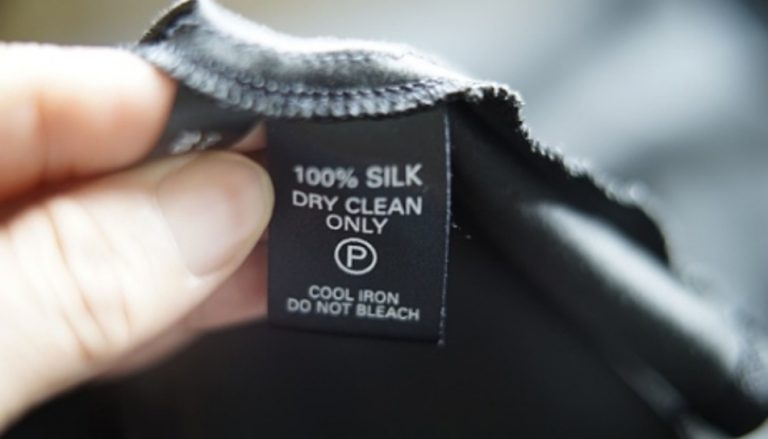Do you drag your feet when it’s time to do your laundry? Have you been racking up a hefty bill on the regular for laundry services just to spare yourself the effort? If so, you’re not alone. For many, laundry is a highly time- and energy-intensive chore they have to psych themselves up into doing. And even for those who try to lighten their load by investing in a washing machine and dryers, there’s an inevitable catch: you can’t just wash all your clothes the same way.
All our clothes come with care labels containing symbols that tell us how a garment should be cleaned. Deciphering those many symbols, however, can be a headache in itself. Perhaps your approach is simply to take a quick look at the tags, shrug, toss your clothes into the wash at a moderate setting, and pray. Maybe you’ve blinked at the tags on your favorite garments, struggled to make sense of them, and set your clothes aside for a hand-wash “some other time” (read: never).
If you, like many others, don’t know how to make head or tail of your clothes’ care labels, worry not. This handy guide to cleaning symbols has got you covered.
Machine Washing Instructions
A symbol that looks like a tub or bucket filled with water on your care label signifies that the item is safe to machine-wash. The tub symbol will sometimes also show a number indicating the recommended temperature for washing and if you have a washing machine from non-he washers then you have nothing to worry. Some garment labels make use of dots instead of numbers, where one dot means you should wash the garment in cool water (temperature about 30 °C), two dots in warm water (about 40 °C), and four dots in hot water (about 60 °C). A cross over the tub indicates that the garment shouldn’t be machine-washed.
Horizontal bars placed under the tub symbol refer to the appropriate spin cycles for the garment. If there are no bars, you may spin and rinse the garment as normal. One bar indicates that you should wash at a moderate spin cycle, which is usually the recommended option for synthetic fabrics. Two bars asks for the gentlest possible spin cycle; this symbol is likely to appear on care tags for clothes made of silk, lace, wool, and other delicate materials.
Hand Washing Instructions
A tub symbol with a hand means that an item should be hand-washed or machine-washed only at low speeds and temperatures of 40 °C or lower. Gentle hand-washing is still the recommended care method for delicates, as these items are especially prone to snagging, shrinking, and other forms of damage.
A twisted symbol on the care label indicates that you can wring the item after washing, whereas a cross over the same twisted symbol means the item should not be wrung.
Bleaching Instructions
It can be tempting to reach for that bottle of bleach to make your whites shine extra-bright, but before you do, make sure that your clothes can handle being bleached in the first place. Check your care label for a triangular symbol. An empty triangle indicates that you can safely bleach the item. If you see a pair of diagonal lines inside the triangle, you can use non-chlorine bleach. If the triangle is crossed out, you cannot bleach the item at all.
Drying Instructions
A circle inside a square on your care label indicates that an item is safe to tumble-dry. Any dots inside the circle will refer to the ideal temperature for tumble-drying: one dot stands for low heat, two dots for medium heat, and three for high heat. A cross over the symbol, meanwhile, means you should not try to tumble-dry the item; simply lay it out and allow it to dry naturally instead.
If your care label instead features a square symbol with three vertical lines inside, the item may be drip-dried by laying it over a washing line or bar. A single horizontal line in the middle of the square means the item should be laid out on a flat surface to dry. Lastly, a curved line at the top of the square indicates that the item should be hung to dry.
Ironing Instructions
Garment care labels should contain an iron symbol with dots inside to represent the recommended temperature for ironing the item. One dot refers to the coolest possible setting (usually a maximum of about 110 °C), two dots to medium heat (maximum about 150 °C), and three dots to high heat (maximum about 200 °C).
A cross over the iron indicates that the garment isn’t suitable for ironing. If the iron has two lines extending from the bottom and a cross over that area, it means that steaming is not allowed.
Dry Cleaning Instructions
Some garments are best off being entrusted to professionals for dry-cleaning instead of ironing by yourself on a countertop. Look out for an empty circle on the care tag to determine if a garment is suited for dry-cleaning only. If you see letters inside the circle, these are meant to indicate to the dry-cleaner which solvent is suitable to use. A cross over the circle, meanwhile, means you should not dry-clean the item.
Interpreting laundry symbols can feel like hard work, but it’s much simpler than it seems once you know what to look out for. Keeping a visual guide on hand or on the wall of your laundry room might also come in handy when it’s time to do the washing. Once you’ve gotten the hang of reading your clothes’ care labels, doing your laundry is sure to be a breeze.

